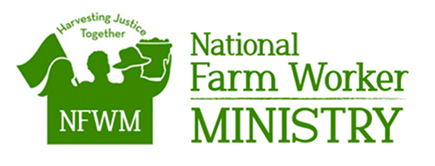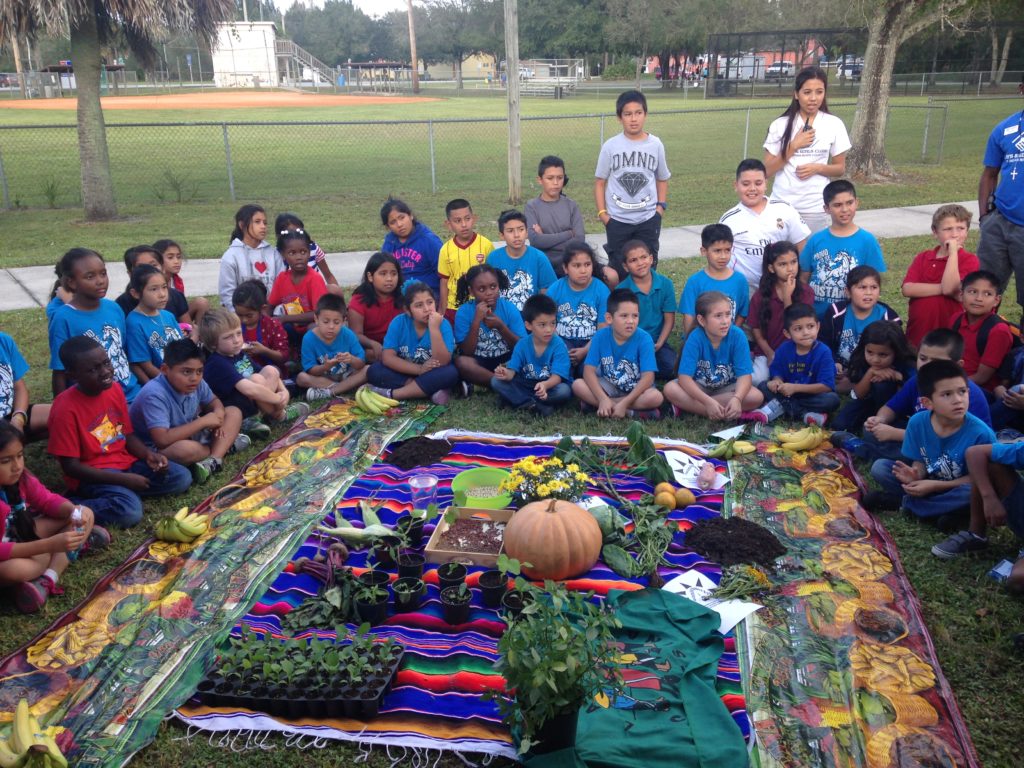
We arrived at the FWAF office around 4pm on a beautiful and crisp afternoon where we met with Yolanda, Hugo and Emily. Shortly after our greetings, we loaded up our cars with all the food and materials and made our way over to the Boys and Girls club.
There, we set-up a beautiful display that consisted of all the essentials- water, seeds, manure (a crowd favorite), germinated plants, harvested plants, herbs and flowers. I was so impressed with all the beautiful things that Yolanda brought from the community garden and how perfect the display was.
Soon enough, 85 children gathered around the blanket where everything was laid out. I think the kids were really intrigued by everything they were seeing in front of them and were eager to see what they were going to learn. Hugo opened up by asking the kids, “Does anyone know how their food is grown?” and the children began answering great answers such as “dirt”, “seeds”, “the ground”, and “sunlight.” Yolanda then began her marvelous demonstration of how food is grown. First, she grabbed a handful of seeds and let the kids feel them. She illustrated how you put the seed in the manure – which she explained was horse poop and the kids went wild with laugher – and how you water the seed that’s in the manure. She then showed them what germinated seeds look like after a couple weeks and how they would be ready for planting soon. Finally, she passed around green bean plants with green beans attached to it that were ready to be harvested. The children were attentive and interested in everything Yolanda was talking about.
After the demonstration, Heather took the floor and played a game with the kids that would teach them about pesticides. She picked 5 volunteers for the game and lined them up in a row. Then, she gave the first kid in line an apple that was covered with dirt. The kids passed down the apple and at the end, who ever had the most dirt on their hands was the farm worker, and whoever had the least was the consumer. The idea of the game is to show children how pesticides work in the supply chain and how farm workers have to endure harsh working conditions that expose them to toxic chemicals and how our produce still has residue of this.
Yolanda and Hugo had made delicious food that they harvested from the community garden, including green beans, carrots, yucca, and cabbage- it was so amazing! We passed around the veggies to the children and they smiled as they ate nutritious food.
As the kids finished, they went on to their next activity and we enjoyed some food ourselves. I was really happy to be apart of this and was so impressed with Yolanda, Hugo and all the children and it was a great way to celebrate World Food Day. In part, this event was great for YAYA-NFWM because we, as a youth-led organization, are very interested in teaching younger generations about the importance of growing food and its ties to the people who continue to harvest our food. We believe there is no better way to learn about the farm worker movement and our food system then at an early and curious age when more children are turning to technology as opposed to outdoor activities. It’s great for us, as young people and leaders in our community, to set a positive example of being socially involved to children. I believe this truly makes a difference when older folks provide a resounding impact on young people in such a way.
Thanks to all the inspiring young and seasoned people who made this event happen! And thank you Yolanda and Hugo for inviting YAYA to be apart of World Food Day!
Cristina Berrios
Orlando YAYA

